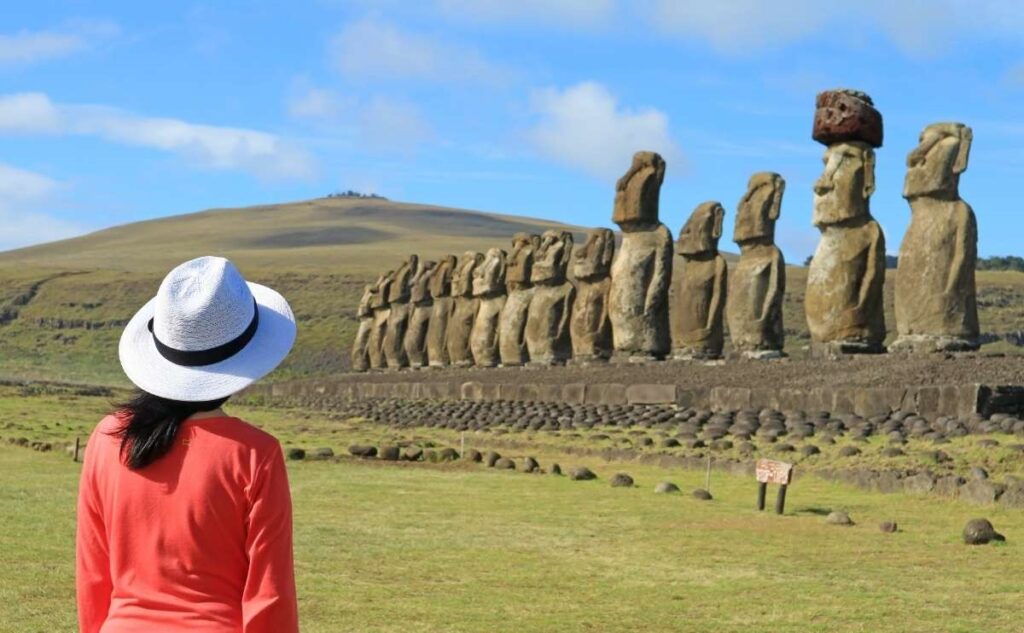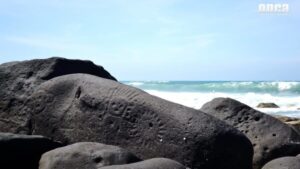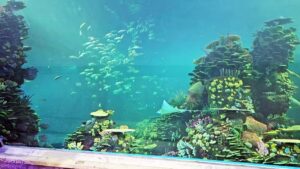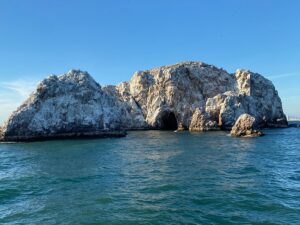Mysteries of Easter Island’s Moai Statues, Chile
Easter Island, or Rapa Nui as it is known locally, is a remote volcanic island in the Pacific Ocean, famous for its mysterious Moai statues. These colossal stone figures have intrigued travelers and researchers for centuries, drawing visitors from around the world to uncover their secrets. This guide will help you explore the wonders of Easter Island, offering practical information and insights into the island’s rich history and culture.
What to See
The Moai statues are undoubtedly the main attraction on Easter Island. Scattered across the island, these statues are carved from volcanic tuff and can reach up to 33 feet in height. The most famous site is Rano Raraku, the quarry where the Moai were carved. Here, you can see nearly 400 statues in various stages of completion, offering a glimpse into the ancient craftsmanship of the Rapa Nui people.
Another must-visit site is Ahu Tongariki, the largest ceremonial platform on the island, featuring 15 restored Moai standing proudly against the backdrop of the Pacific Ocean. For a unique experience, visit Ahu Akivi, where seven Moai face the ocean, unlike most others that face inland. This site is particularly special as it aligns with the equinox, showcasing the Rapa Nui’s advanced understanding of astronomy.
A Bit of History and Interesting Facts
The Moai statues were created by the Rapa Nui people between 1400 and 1650 AD. These statues are believed to represent the spirits of ancestors, chiefs, or other high-ranking individuals. The Moai were placed on stone platforms called ahu, which served as tombs for the individuals they represented.
One of the most intriguing aspects of the Moai is how they were transported from the quarry to their final locations. Theories suggest that the Rapa Nui used a combination of ropes, logs, and manpower to “walk” the statues to their destinations. This feat of engineering is still a subject of fascination and study today.
An interesting fact about the Moai is that many of them have bodies buried beneath the ground, with only the heads visible. Excavations have revealed intricate carvings on the bodies, adding another layer of mystery to these enigmatic figures.
How to Get There and Tips for First-Time Visitors
Easter Island is one of the most remote inhabited islands in the world, located about 2,300 miles from Chile’s mainland. The most common way to reach the island is by flying from Santiago, Chile, to Mataveri International Airport, the island’s only airport. LATAM Airlines operates regular flights, and the journey takes approximately five and a half hours.
For first-time visitors, it’s important to plan your trip in advance, as accommodations and tours can fill up quickly, especially during peak tourist seasons. Renting a car or hiring a local guide is recommended to explore the island at your own pace and gain deeper insights into its history and culture.
When visiting the Moai sites, be respectful of the cultural significance of these statues. Stay on designated paths and avoid touching the statues to help preserve them for future generations. Additionally, consider visiting the Rapa Nui National Park Visitor Center to learn more about the island’s history and the ongoing efforts to preserve its unique heritage.
Easter Island offers a unique blend of natural beauty, cultural richness, and historical intrigue. Whether you’re drawn by the mystery of the Moai or the allure of a remote island adventure, Easter Island promises an unforgettable experience.








